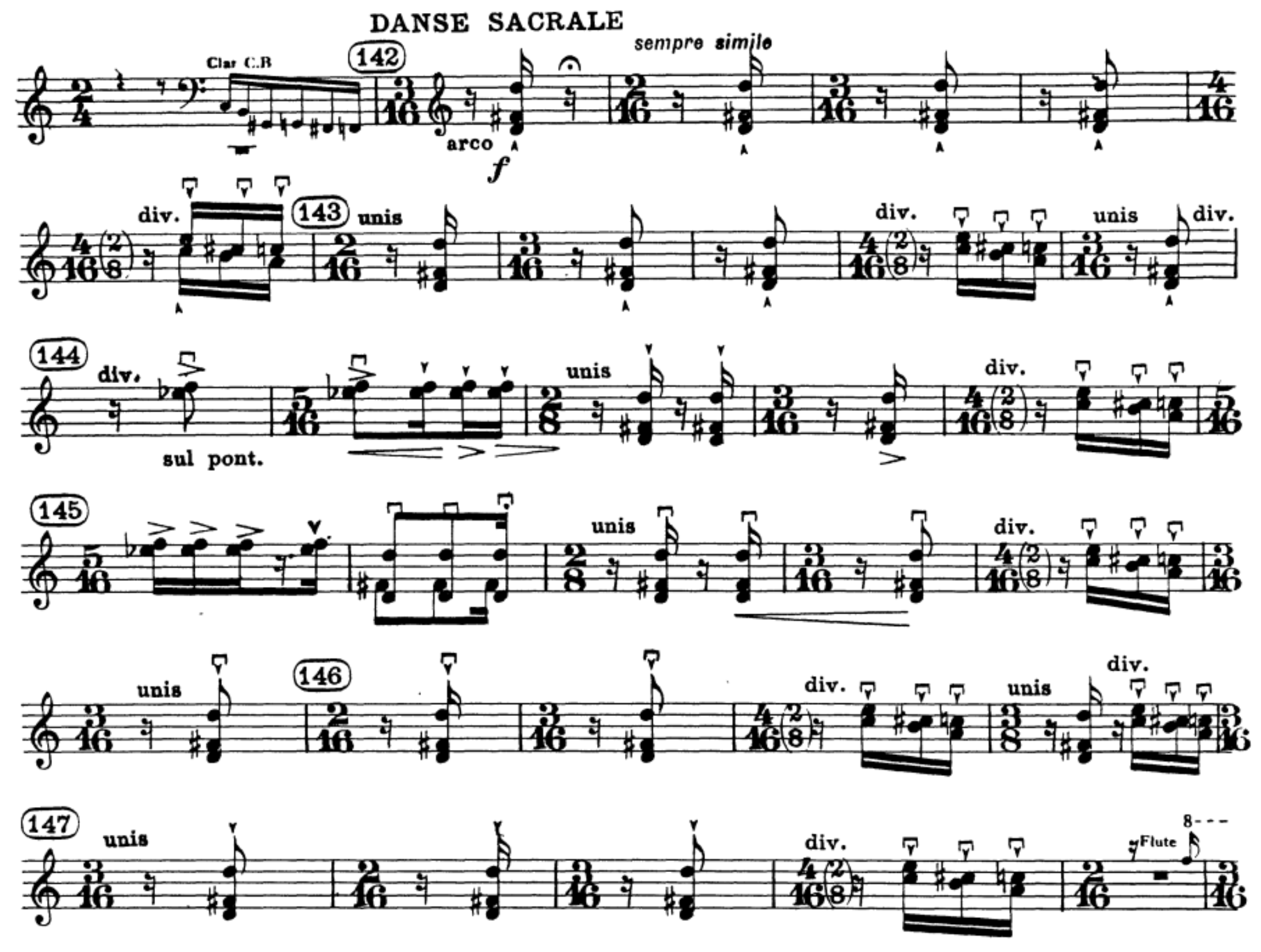4. Meter.
The pulse, or the beat, is the repeating rhythmic sound that instinctively urges listeners to tap their foot or to sway back and forth. The beat, on its own, isn’t enough to organize rhythm effectively. Without grouping beats together into smaller units, a beat can become interminable and monotonous.
The human brain naturally sifts through large numbers and groups them into groups of 2, 3, 4, or 5. This is clearly a phenomenon that transcends to the grouping of repeating beats in music. The incessant repeated beats can be grouped into smaller chunks to more easily absorb the information that our brain is attempting to understand.
The grouping of beats into units is known as meter. The most common meters in music comprise of repeated groups that contain 2, 3 or 4 beats. A classic rock & roll tune typically features four beats grouped together to create a 4/4 time. Every four beats the meter restarts and cycles through the repeating pattern again.
“Hound Dog”, performed live by Little Richard
While 4/4 time will have a meter that groups four beats together, a typical march will cut that grouping in half and repeat only every two beats. This is notated as either 2/4 or 6/8 time, depending on whether it is simple or compound (more on that below).
A brass band performs a march at the Whit Friday Brass Band Competition.
A slow waltz has a meter that is in three. The music of a waltz coaxes the listener to subconsciously and instantly organize the pulses into groups of three. A waltz is usually in 3/4 time.
Michaela DePrince & Skyler Maxey-Wert waltz to "McGee's A Minor Waltz" by David Greely
In music, we notate meter with two numbers stacked on top of each other, and each of these numbers represents important information for the musician. The top number indicates how many pulses, or beats, or going to comprise one unit (one grouping of beats). The bottom number indicates which note value will be notated as equaling one beat. In the case of 4/4 time, the music is divided into groups of four beats, and a quarter note will comprise one beat.
Since the quarter note comprises one beat, and since the pulses are grouped into sets of four, this means that each notated measure would encompass the value of four quarter notes.
Within these meters and beats, the pulses themselves in isolation can be categorized in two different ways: 1) simple meter and 2) compound meter. Simple meter takes each pulse and equally divides it into two. Compound meter, on the other hand, takes that same pulse and divides it instead into three equal parts.
Although the terms themselves are not universal, the feel of three and the feel of two can be heard in music from all over the world.
Haitian group Boukman Eksperyans gives us a great example of simple and compound feel within the same song, “Mayi a Gaye”. Listen to the song below and listen for the sudden shift of beat subdivision from a simple meter that divides the beat into two equal parts, to a compound meter that divides it into three.
“Mayi A Gaye” as recorded by Haitian group Boukman Eksperyans.
Meter is a way for us to notate the organization of the feeling of pulse in music. Meter can change from measure to measure and can become extremely complicated, can stay the same for the duration of the work, and everything in between.
IGOR STRAVINSKY “Sacrificial Dance” from the ballet Rite of Spring
LUDWIG VAN BEETHOVEN “Fur Elise”








